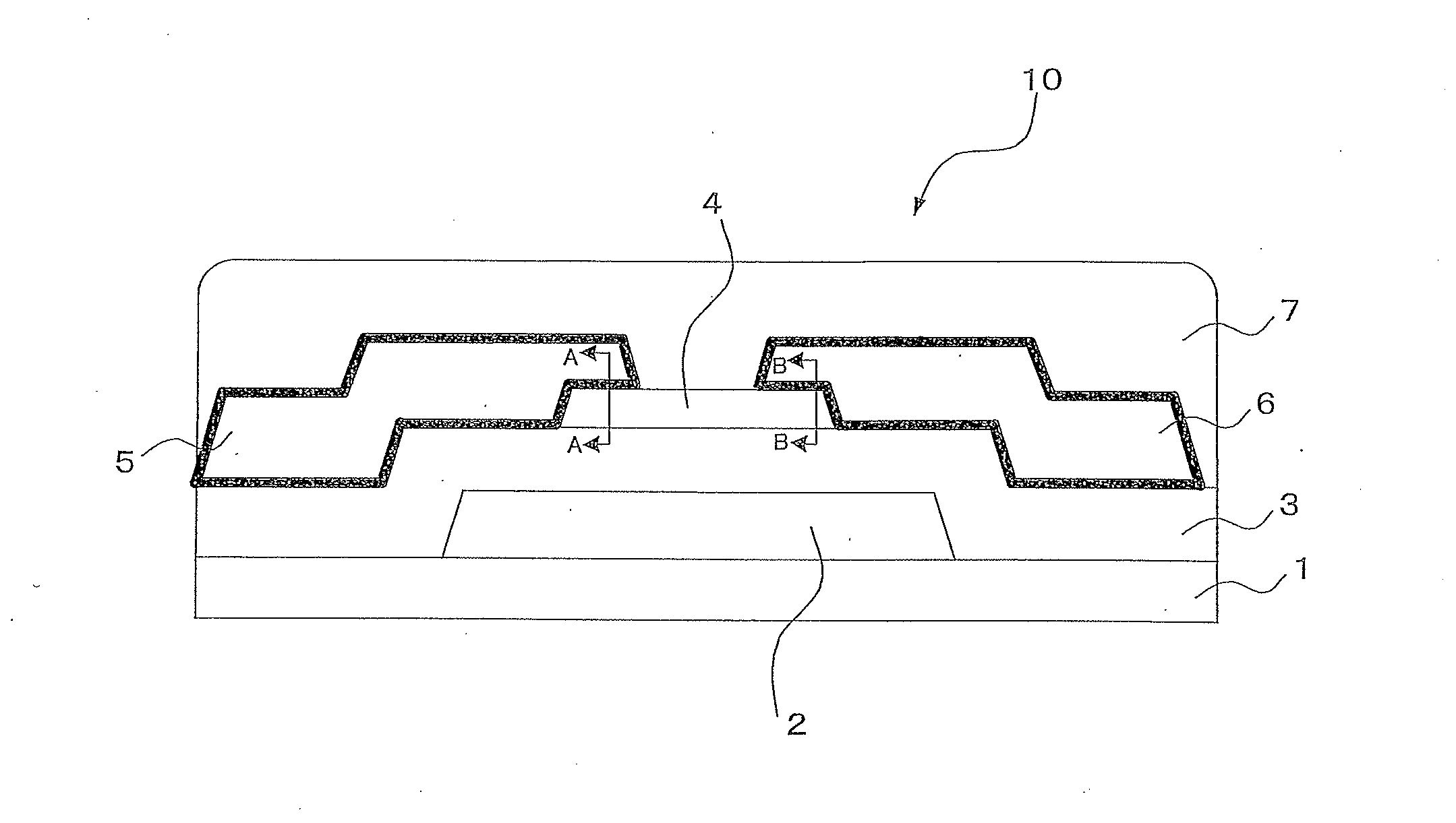Thin-film transistor
- Summary
- Abstract
- Description
- Claims
- Application Information
AI Technical Summary
Benefits of technology
Problems solved by technology
Method used
Image
Examples
Embodiment Construction
[0063]An embodiment of this invention will be described in detail below. FIG. 1 is a diagram showing the cross-sectional structure of a thin-film transistor according to the present invention. The thin-film transistor (TFT) 10 in FIG. 1 functions as a drive device that performs display driving of, for example, a liquid crystal display, organic EL (Electro Luminescence) display or the like, and has a bottom gate structure, for example.
[0064]The thin-film transistor 10 has a gate electrode 2 at a selected region on a substrate 1 composed of glass, plastic or the like. A gate insulating film 3 is formed so as to cover the gate electrode 2 and substrate 1. A semiconductor layer 4 is provided on the gate insulating film 3, and a source electrode 5 and a drain electrode 6 are arranged locally on the semiconductor layer 4 in a predetermined pattern. And a protective film (passivation film) 7 is overlaid on the source electrode 5, drain electrode 6, and semiconductor layer 4.
[0065]The gate ...
PUM
 Login to View More
Login to View More Abstract
Description
Claims
Application Information
 Login to View More
Login to View More - R&D
- Intellectual Property
- Life Sciences
- Materials
- Tech Scout
- Unparalleled Data Quality
- Higher Quality Content
- 60% Fewer Hallucinations
Browse by: Latest US Patents, China's latest patents, Technical Efficacy Thesaurus, Application Domain, Technology Topic, Popular Technical Reports.
© 2025 PatSnap. All rights reserved.Legal|Privacy policy|Modern Slavery Act Transparency Statement|Sitemap|About US| Contact US: help@patsnap.com



